Tomato "Miracle of the Earth" - an indeterminate variety with large fruits
The "Miracle of the Earth" tomato is a tall variety, it stretches out and has a length of 1-2 m. The variety ripens early, it takes 3 months from the emergence of sprouts to harvest. This tomato famous for the size of its fruits, the first ripe tomatoes weigh 0.5 kg, then slightly smaller fruits ripen on the bushes - 250-350 g. If you try, you can get tomatoes weighing 1 kg.
Content:
- Description of the tomato variety "Wonder of the Earth"
- Planting seeds for seedlings
- Transplanting
- Care
- Diseases and pests
Description of the tomato variety "Wonder of the Earth"
Tomato "Wonder of the Earth" - indeterminate variety, that is, it grows with the formation of fruits. Up to 20 kg can be harvested from a bush, up to 10-14 bunches can grow on it, and 6-8 tomatoes on each bunch.
Fruits are smooth, pink, in the form of hearts.
They do not have green spots near the stalk. Salads are prepared from them, as they are sweet. They have an excellent presentation, they do not crack, do not have stains. It is good to transport them.
Planting seeds for seedlings
Seeds for planting seedlings they are soaked in the greenhouse in early March, and for planting seedlings in open ground, seeds are prepared from the beginning of April, that is, 2-2.5 months before planting in the ground.
Seed preparation:
- Before planting, the seeds are soaked for 24 hours in the following composition: 1 teaspoon of Agricola Vegeta or Effekton in 1 liter of water.
- Then the seeds are put in bags, wrapped in a polyethylene bag and placed in the refrigerator for 1-2 days, but not in the freezer.
- Before sowing, the seeds are etched for half an hour in a 1% solution of pink potassium permanganate.
The land is prepared as follows: take 1 part of sod, peat land and humus. Pour 1 teaspoon of phosphorus, potassium and nitrogen into a bucket of earth. Then the soil is poured onto a baking sheet with a layer of 4-5 cm and heated in the oven at a temperature of 100-115 C for 20 minutes. Ready soil is poured into the boxes, it is well moistened. Make grooves about 1 cm deep with an indentation of 5-6 cm between them.
Seeds are poured on top, a distance of 1.5 cm is made between them and they are sprinkled with a layer of earth of 1 cm, do not water them from above. Then the boxes are placed in a warm place with a temperature of 22-25 C.
When seedlings appear, the seedlings are hardened, taking them out for several hours to a place where the air temperature is 8 ° C.
When the seedlings grow 4 leaves, they can dive, that is, plant in separate containers, but good drainage must be done at the bottom of the container. Drainage can be created from crushed eggshells.
Transplanting
The soil is prepared in the fall, it is fertilized at the rate of 4 kg of manure per 1 sq. m. Tomato seedlings are planted in Central Russia:
- in unheated greenhouses - from early May to mid-May.
- under the film - at the end of May.
- in open ground - in early June.
Tomatoes a well-lit place is required. They are planted in the places where they grew up before. onion, cabbage... It is not advised to plant tomatoes where they grew eggplant, potatoes, pepperas they get sick similar diseases.
Pits are made 15x15 cm, 25 cm deep, seedlings are planted there. A distance of 50-70 cm is maintained between the pits; it is best to plant in a checkerboard pattern. Before planting seedlings process the ground with phytosporin, then the plants will not get sick with rot, scab, powdery mildew, brown rust.
Care
Since the tomato bushes "Wonder of the Earth" are very tall and therefore the sprouts must be tied to the supports. The variety tolerates temperature extremes well. It has good drought tolerance.
All stepchildren cut off, make it so that one trunk grows, on which there would be brushes with fruits.
Here you need to accurately calculate the pinching time, if pinching early, then the sprouts that need to be torn off will be very small, because of this, new ones will grow from the sleeping buds and you will need to pick off the stepsons again. If this is done late, then the grown stepchildren will spend a lot of nutrients from the bush.
Therefore, stepchildren are cut off when they are 7-8 cm long, they are destroyed 1 time in 7 days. This is done so as not to expose the tomatoes to the sun's rays. From mid-June, you need to stop picking leaves and stems. It is advised to mulch the soil under the plantings: straw, needles of fir and pine trees, hay, cut grass, tree bark. And it is not worth covering the ground with sawdust, because sawdust takes nitrogen from plantings.
Dignity mulching:
- With it, tomatoes are watered more rarely, in heat they watered once a week, without mulching, watered every other day.
- There is no need to loosen the ground, as root system tomatoes will breathe freely, and the earth will have all the necessary elements.
- Mulching perfectly protects against diseases... When the ground is not covered by anything, then during rain and watering, dirt falls on the lower leaves, and with it infections and spores of fungal diseases.
It is necessary to water the plants on time, since with a lack of water, the flowers fall, and the tomatoes will be tasteless and tough. Also, plants should not be poured, with an excess of moisture, the risk of disease increases. late blight and bacterial cancer. With an excess of moisture in the "Miracle of the Earth", the fruits will become tasteless and watery.
Without the required amount fertilizers the number of tomatoes and their size are getting smaller, and the taste is worse. To evaluate a bush, try observing how it blooms. If there are few or no flowers at all, then nitrogen fertilizers should be applied under the plant. If the fruits are tied very poorly, then the plant lacks copper, boron, phosphorus.
With abundant flowering and a small number of ovaries, it can be concluded that the flowers are not pollinated, as a rule, this is due to the fact that at temperatures above +30 C, the pollen will be sterile. In this case, it is necessary to pour 1 g of boric acid into a bucket of water (1 l) and spray the tomatoes with the composition. And in the evening, walk around the site and shake the bushes a little.
With an excess of nitrogen in tomato bushes, intensive leaf formation is observed, but a small number of flowers, and the fruits are not set at all.
For feeding, first water the bushes with manure solutions, chicken droppings, nettle, and after 10 days with a solution of complex mineral fertilizer... So alternate fertilizers. Until mid-June, emphasis should be placed on fertilizers with nitrogen, and then fed with phosphorus and potassium.
Diseases and pests
If you saw that the leaves of the "Miracle of the Earth" tomato were twisted in the summer, then do not worry, this is its peculiarity. Its shoots hang down somewhat, and the leaves are slightly curled down. With heat and lack glaze the leaves are curled to reduce the area illuminated by the sun's rays.
But if you saw that the leaves not only curl, but also shrink, this means that you have not looked after him correctly.
Then it is necessary to give tomatoes grow leaves and spray their water. Also, the leaves can be crushed due to an infectious disease - thin-leaved. In this case, the diseased bush is eliminated.
Diseases:
- Mosaic, it is revealed by the change in the shape and color of the leaves. To destroy the disease, the bushes are burned. For prevention, seedlings are treated after 10 days with a solution, diluting 1 liter of skim milk in a bucket of water (10 liters) and adding 1 teaspoon of urea.
- With late blight, there are brown specks on the shoots, fruits and leaves, a whitish bloom is found on the bottom of the leaf. To eliminate diseases 20 days after planting the seedlings, they are treated with "Zaslon" (3 caps are diluted per 1 liter of water). When another half month has passed, the tomatoes are sprayed with the "Barrier", 2 tbsp is dissolved in a bucket of water (10 l). spoons.
- With the apical rot of tomatoes on unripe fruits, there are depressed dry dark shiny spots or watery spots with a rotten smell. To prevent disease, tomatoes need to be constantly watered, and the affected tomatoes spray with a solution of 1 bucket of water (10 l) and 1 tbsp. tablespoons of calcium nitrate, as well as burn diseased fruits.
- With brown spotting, brownish spots with a gray velvet bloom are visible below the leaves. Gray rot of tomatoes, with it small round spots appear on the tomatoes.
- Phomosis - this disease manifests itself as a small brown speck at the base of the tomato.
- Root rot, with it the leaves wither, the root collar of tomatoes rots.
Plants are treated for these diseases by spraying them with "Barrier" or "Barrier", then take a break for 5-6 days and spray again.
Pests:
- Medvedka Is a brown insect that feeds on everything, is up to 5 cm long, has digging legs and shortened elytra. Best of all, the bear is destroyed by the "Thunder" drug.
- Wireworms Are zinc-yellowish caterpillars. 3 days before planting the seedlings for 3-4 days, sticks of wood 16-17 cm are placed vertically into the ground, on which cut pieces of raw are strung carrots, potatoes... The ends of the sticks should stick out of the ground. After 2-3 days, sticks with insects are removed and burned.
- Scoops are caterpillars, they gnaw stems and leaves at night in the dark. To eliminate scoops, tomatoes are sprayed with a solution from a bucket of water (10 l) and 50 g of Strela powder.
The "Miracle of the Earth" variety is highly resistant to various diseases. It tolerates drought well. Another advantage is the growth of very large fruits weighing up to 1 kg.
More information can be found in the video.



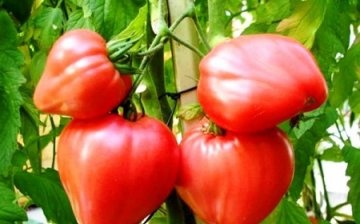
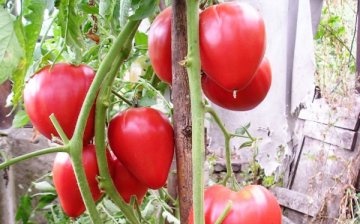
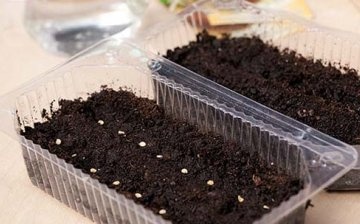
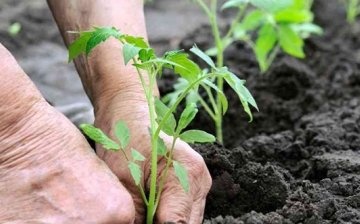
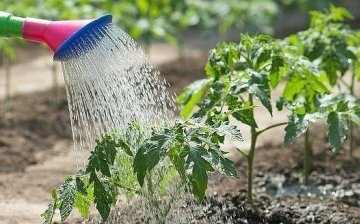
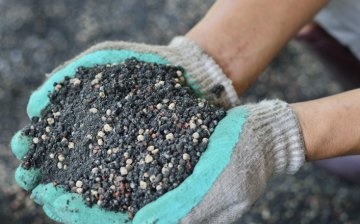

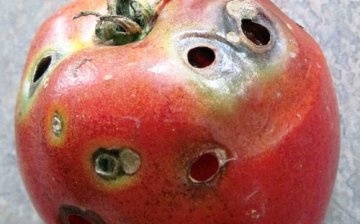








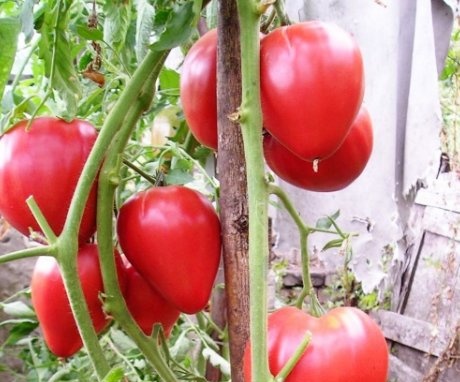

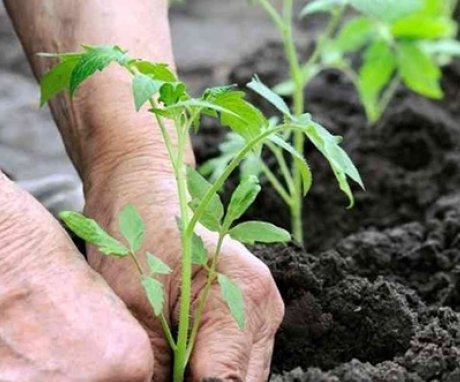
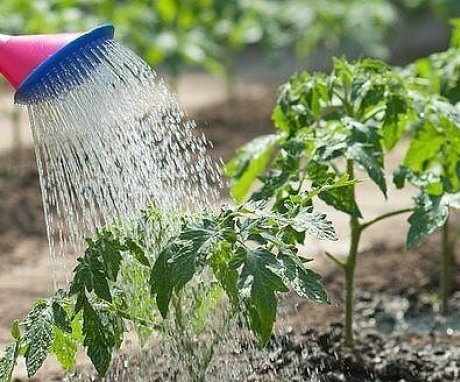
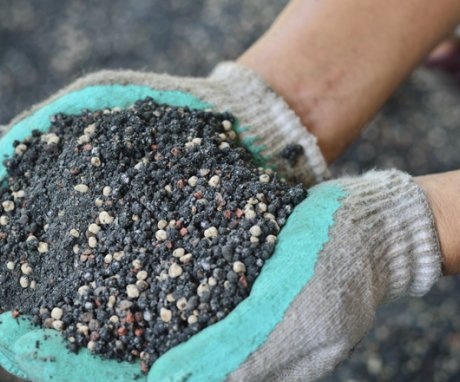
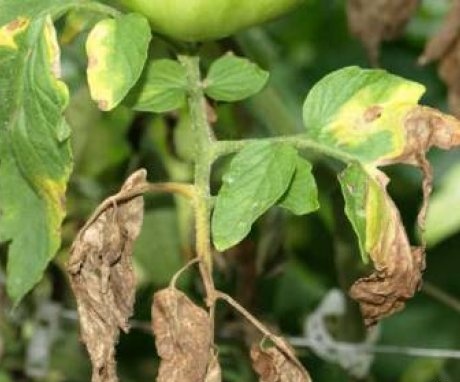
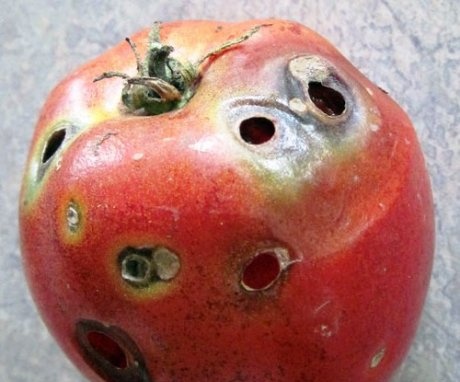
An incredible variety, I just can't believe that 20 kg of fruit can be harvested from a bush. I never water tomatoes more than three times a week - this contributes to better rooting of the plant. Dry and damaged leaves growing from below are always cut off.